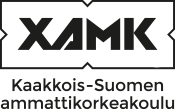Customer-oriented marketing (5 cr)
Code: IB00CP09-3003
General information
Enrollment
15.08.2019 - 30.08.2019
Timing
02.09.2019 - 31.12.2019
Number of ECTS credits allocated
5 op
Mode of delivery
Contact teaching
Campus
Kouvola Campus
Teaching languages
- English
Degree programmes
- Degree Programme in Digital International Business
Teachers
- Hugh Clack
Teacher in charge
Hugh Clack
Groups
-
IBKV19SP1Digital international business, International marketing
-
IBKV19SP2Digital international business, Global supply chain management
Objective
You are able to describe the aspects of customer oriented marketing concepts, including its objectives and functions.
You are able to analyse customer buying behavior and define principles for the segmentation and selection of target groups.
You are able to evaluate the effects of digital operational environment on customer oriented marketing.
You are able to design a marketing mix, taking into consideration product life cycle, marketing objectives and corporate responsibility.
Content
What are the objectives and role of customer oriented marketing and relationship marketing in the organisation’s operation?
How does the digital economy and operational environment affect the planning of marketing?
How is customer buying behavior and segmentation taken into consideration when defining objectives and target groups?
What does marketing mix consist of and how can it be used to reach organisational goals?
Materials
Course book:
Marketing: an introduction, 4th Edition, Masterson, Phillips, Pickton
Other reading:
Marketing Theory, 3rd Edition, Baker and Saren
Principles and Practice of Marketing, Jobber
Teaching methods
Scheduled track:
Contact sessions, group/independent working
Exam schedules
Resits: 3.2.2020, 17.2.2020, 6.4.2020
Evaluation scale
1-5
Assessment criteria, good (3-4)
You know how to
a. use professional vocabulary systematically
b. look for information in the key information sources of the field
c. identify interrelated tasks
e. use the key models, methods, software and technologies of the professional field
